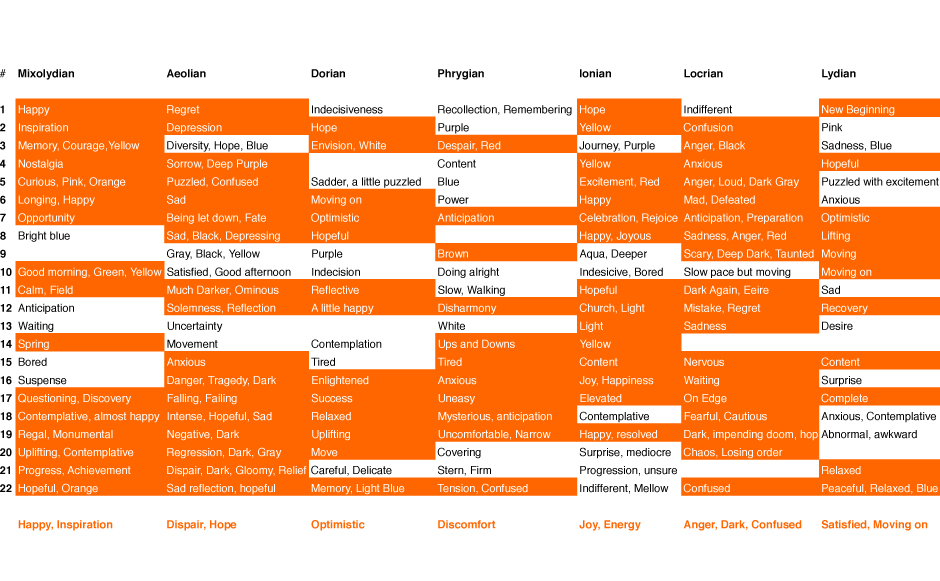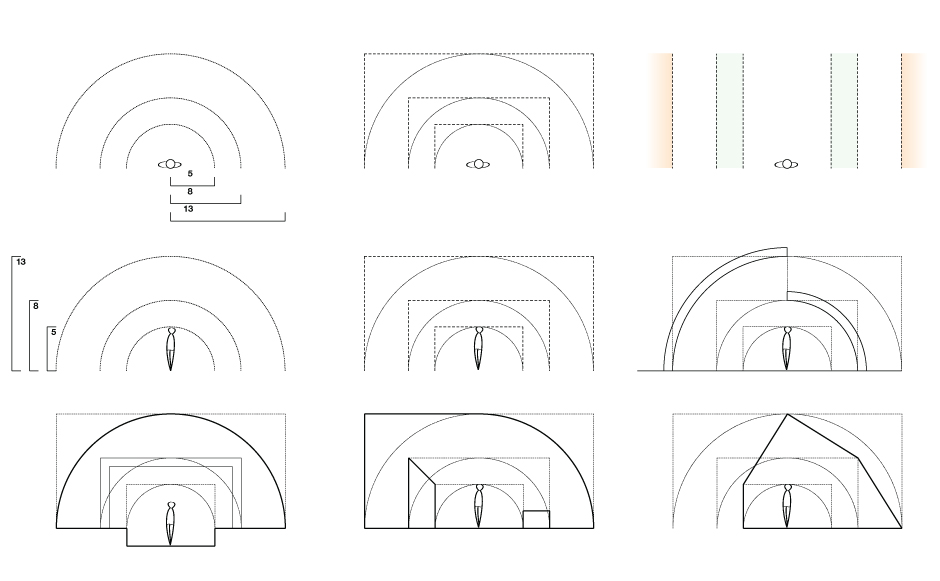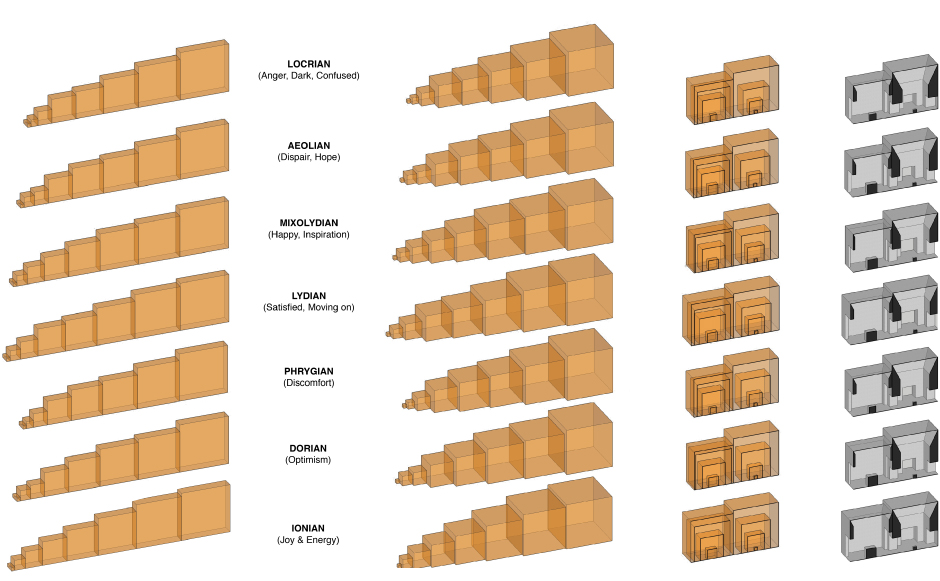Within the realm of music, the musician performs the song differently every time, but the notes stay the same. The proportions within the architecture will reflect that of the music, but will be executed in a variety of different ways and experienced in different ways as well. Much like how emotional qualities are evoked within the realm of color, different emotions can be evoked through musical modes. Each mode contains three major, three minor, and one diminished chord yet feels completely different because of the way the chords are arranged.

I conducted a study where 22 individuals listened to a series of chord progressions within different musical modes. In order to capture the emotions evoked strictly through the chords, there needs to be a lack of rhythm and a constant chord progression. Each mode is a scale structure that can be associated with different moods. The short progressions used the same interval jumps in this order of the scale: 1, 4, 5, 1, 6, 2, 7, 1. With this scientific approach, it eliminated any potential differences in emotion caused from melodies or rhythm.

The results were surprising yet meaningful, most of the individual’s responses resulted in overlapping emotions. In order to take this further, I linked these emotional responses up with the emotional responses associated with color. There are seven different musical modes and seven colors in the rainbow. Is it mere coincidence that there was a color to fit each musical mode? Perhaps the arts are linked together in more ways than meets the eye (or ear).
The results started to make more sense after further analysis. The most positive sounding modes started on a major chord. These chords fit into the golden section. The negative sounding modes all started and ended on a minor chord. This also makes sense when matched up with the emotional responses. Finally, the most negative responses were attributed with the Locrian mode. Unique from all the other scale structures, Locrian starts and ends on a diminished chord. Seeing as it is structurally furthest from the Ionian mode, it makes sense for it to have the most negative responses. All of these responses can be used in conjunction with architectural proportions, to help evoke emotional responses.
The individual perceives proportions through an aural sense of spatial relationships. These distances can be controlled to reflect musical proportions and progressions. See the diagram below:

This following is an exploration of musical modes being transformed into a spatial experience. These mode “chambers” have a consistent design, however the proportions vary per mode. The idea is that these subtle changes in proportion do in fact effect the experience of the individual. Each of these spaces can be used as spaces to display art, practice music, or rehearse an act. The argument here is that the visual perception of these spaces from the individual is identical to the auditory perception of musical mode structures. This is valuable because of the emotions evoked from listening to these modes.

It is the perceptual experience of these spaces that have the same qualities as musical modes.
Continue onto RHYTHM & FORM
Return to MASTER THESIS – OVERVIEW
